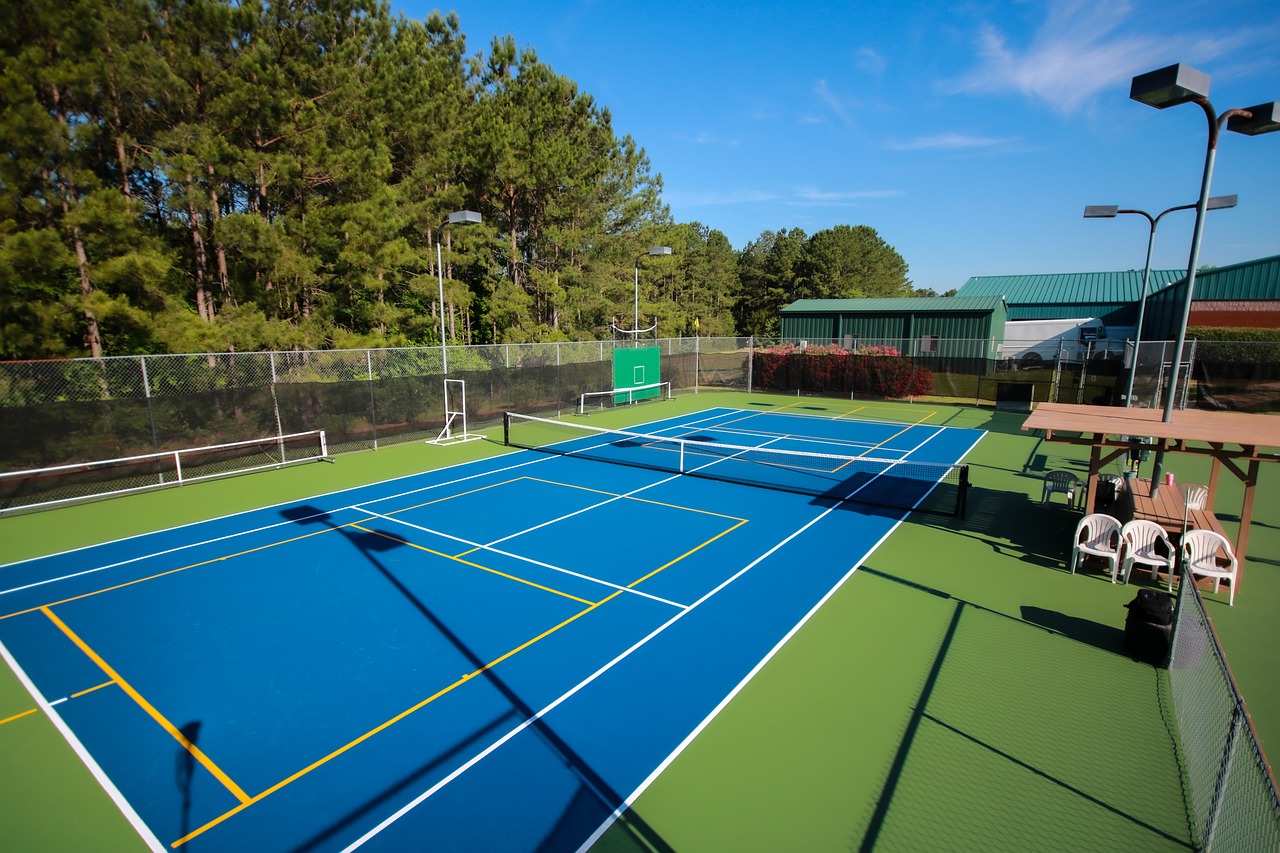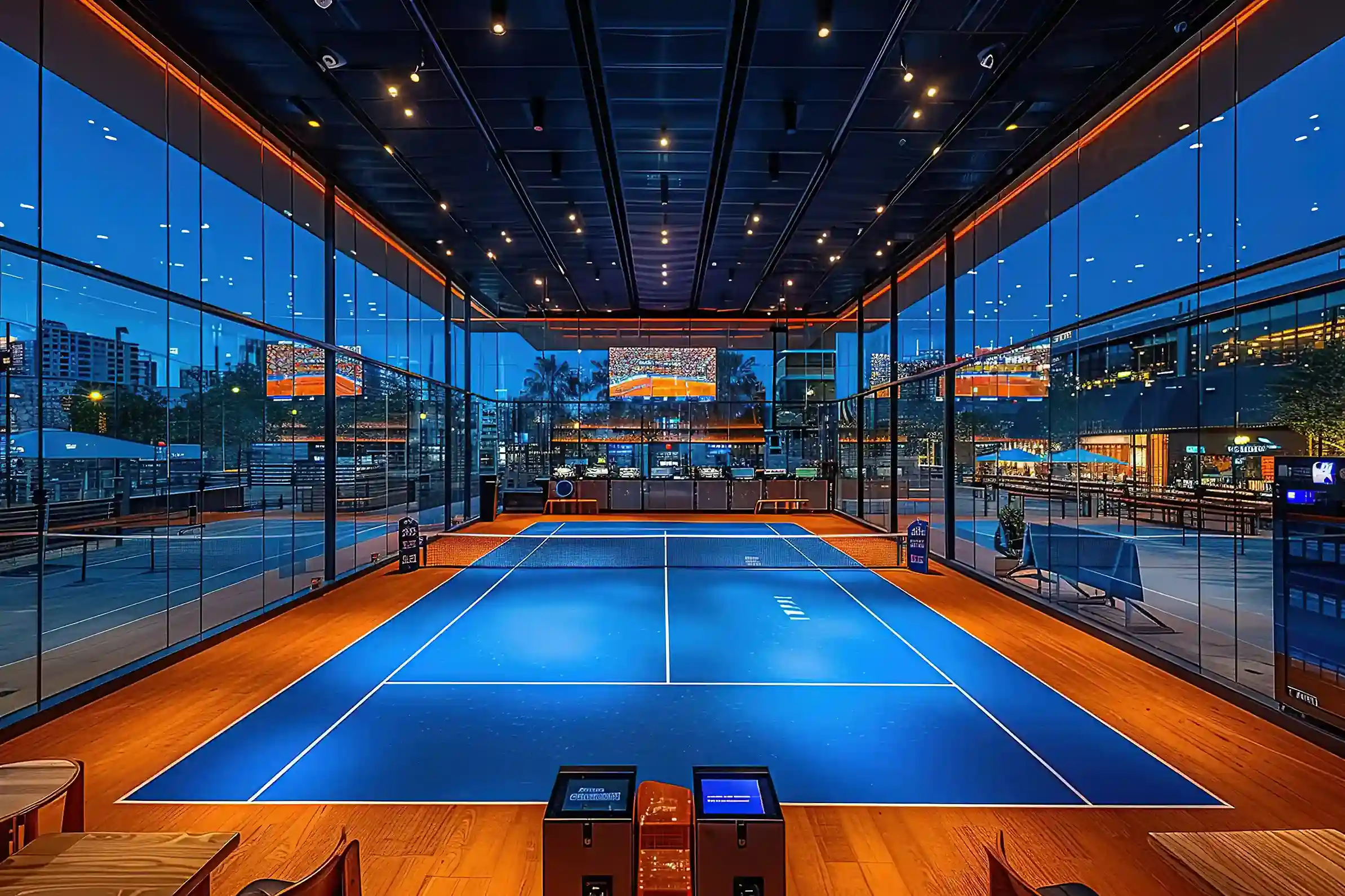A Game-Changer for Sports Facilities
The rise of pickleball has placed new demands on sports facilities to meet the needs of avid and professional players alike. At the heart of these demands lies a critical but often understated factor—sports flooring. Whether it’s pickleball, basketball, or futsal, the right flooring goes far beyond aesthetics; it plays a crucial role in performance, player safety, facility longevity, and even environmental impact.
Next-generation flooring solutions have revolutionized the industry with features like interlocking designs, advanced traction, and eco-friendly materials. This guide explores the intricacies of choosing the ideal pickleball flooring, examining common challenges, effective solutions, and cutting-edge trends.
If you’re managing a sports facility or evaluating court surfaces for professional or recreational use, this article will equip you with the knowledge to make informed decisions that benefit your players and your organization.


Common Challenges in Sports Flooring Installation
Uneven Surfaces and Subfloor Issues
One of the most frequent challenges during flooring installations is dealing with uneven or damaged surfaces. Uneven subfloors can compromise the stability of interlocking sports flooring and lead to long-term durability issues. Without proper preparation and leveling, these problems may cause stress injuries for players or require costly repairs in the future.
Player Safety and Performance Concerns
Performance and safety are non-negotiable in athletic facilities. An improper choice of materials or neglecting traction in outdoor sport court surfaces can result in unintended slips, falls, or strain injuries. For example, high-friction surfaces may hinder player movements, while poorly cushioned floors increase the impact on joints during high-intensity games.
Limited Adaptability for Multi-Sport Usage
Many sports facilities serve multi-sport purposes, from pickleball and basketball courts to futsal fields and event spaces. Flooring systems that cannot adapt quickly to varying requirements may cause delays in scheduling and increased labor costs.
Weather and Environmental Conditions
Outdoor sports flooring faces natural challenges like UV exposure, rainwater pooling, and temperature fluctuations. Materials that absorb moisture or cannot withstand extreme weather conditions deteriorate quickly, requiring frequent replacements or repairs.
Sustainability and Regulatory Compliance
Increasingly, owners of sports facilities are held accountable for environmental sustainability. However, many flooring materials fail to meet today’s standards for low carbon emissions or recyclable components. For contractors, these missteps could impact brand reputation or even violate local compliance regulations.


Solutions and Best Practices
Solving Surface and Subfloor Challenges
Mitigate subfloor irregularities by incorporating adjustable underlayment systems and moisture barriers. These solutions address uneven concrete bases often found in both indoor and outdoor courts. For pickleball flooring, high-tolerance interlocking sports floors streamline installation while providing superior grip and flexibility.
Safety-First Materials and Technology
To safeguard athletes, invest in flooring systems designed with optimized shock absorption and slip resistance. For instance, premium modular sport tiles ensure a balance between traction and smooth lateral movement—ideal for fast-paced games like pickleball. Selecting UV-treated and weather-resistant materials for outdoor courts further reduces injury risks, even in harsh environmental conditions.
Modular and Interlocking Systems for Versatility
Interlocking sports flooring is the best solution for multi-purpose facilities. These modular setups facilitate quick installation and dismantling, reducing downtime between sporting events. High-quality interlocking sports floors are durable, easy to transport, and suitable for a wide range of surfaces.
Durable Outdoor Sports Flooring Materials
Outdoor sport court surfaces should include weatherproof finishes that prevent damage from prolonged sun exposure, rain, or heavy foot traffic. Polypropylene and similar thermoplastics, which feature anti-slip finishes, are widely regarded as resilient choices for outdoor pickleball courts.
Commitment to Sustainability
Minimize your environmental impact with flooring made of recyclable materials or featuring energy-efficient manufacturing processes. Choosing pickleball flooring certified by organizations promoting sustainable production practices also ensures compliance with environmental regulations while enhancing your brand’s credibility.


Choosing the Right Flooring for Your Needs
Selecting the best pickleball flooring for your business goes beyond aesthetics. Here’s how to ensure you make the right choice based on your facility’s unique requirements.
Key Factors to Consider
- Player Comfort and Safety: Evaluate impact resistance, cushioning, and traction properties.
- Versatility: Opt for modular systems if your space caters to multiple sports.
- Maintenance: Choose materials that are easy to clean and resistant to wear-and-tear.
- Cost vs. Lifecycle: Calculate the upfront cost against the expected lifespan of the flooring.
- Environmental Factors: For outdoor spaces, prioritize weather-resistant and UV-stable materials.
Comparison Between Indoor and Outdoor Flooring
- Indoor Pickleball Court Flooring
Indoor flooring demands excellent stability, low impact on athletes’ joints, and minimized noise during play. Polyurethane and wood-polymer composites dominate this market due to their elasticity and long-lasting performance.
- Outdoor Pickleball Court Surfaces
Durable, all-weather solutions like polypropylene tiles are gaining traction due to their portability and resistance to weather damage. Anti-slip finishes and seamless drainage features are critical components for high-traffic outdoor courts.
Spotlight on Interlocking Sports Flooring
Interlocking flooring systems are revolutionizing pickleball courts with their quick installation and adaptability. These self-locking designs not only reduce long-term maintenance costs but provide ideal traction and resilience without the need for adhesives. Leading brands offer custom color options, allowing facility managers to reflect their branding or design preferences effortlessly.
The Future of Sports Flooring
Emerging Technologies
Advancements in smart materials will introduce self-healing properties and adaptive surface textures to meet evolving demands. Additionally, data-connectivity-enabled flooring systems could provide real-time feedback on player performance, redefining training methodologies.
Sustainability at the Core
Eco-friendly manufacturing processes and recyclable components are no longer aspirational but necessary. By investing in greener products, sports facilities can meet compliance regulations while contributing positively to the environment.
Adaptation for Future Sports
Facility managers must consider scalable designs capable of accommodating new sports and trends, from e-sports arenas to hybrid recreational courts. Versatile, customizable flooring options will continue to gain prominence as multi-sport venues boom.


Invest in the Right Sports Flooring for Long-Term Gains
The right flooring system is central to a successful sports facility. From enhancing player performance to improving durability and ease of maintenance, choosing the right pickleball flooring is critical.
Whether you’re constructing a brand-new pickleball court, upgrading your facility, or planning multi-sport surfaces, an informed decision today will yield significant returns tomorrow.
To receive further consultation or learn more about our range of sports flooring solutions, contact VMKON. Discover how innovative flooring technologies can elevate your facility to the next level.







